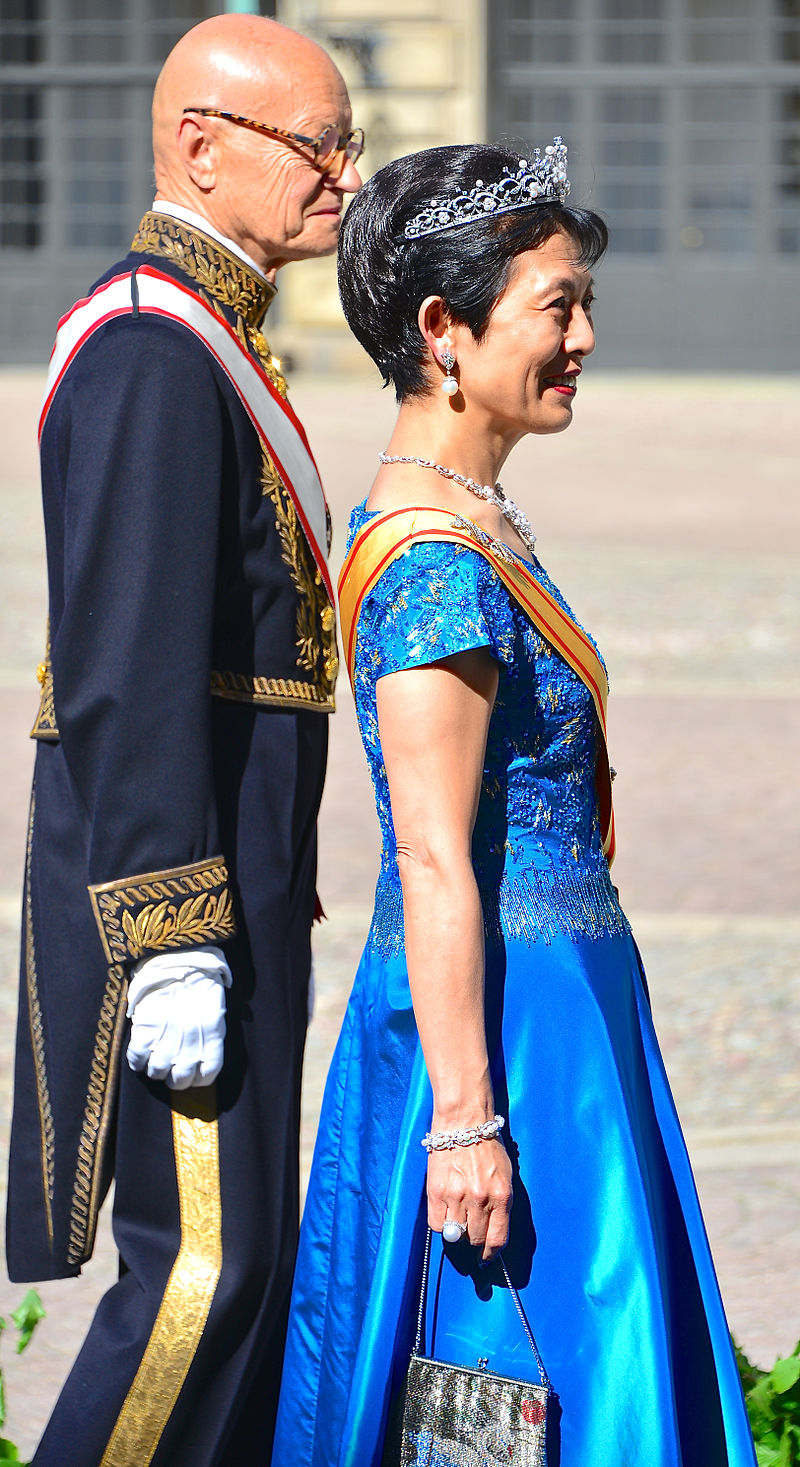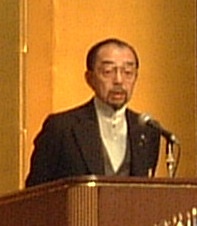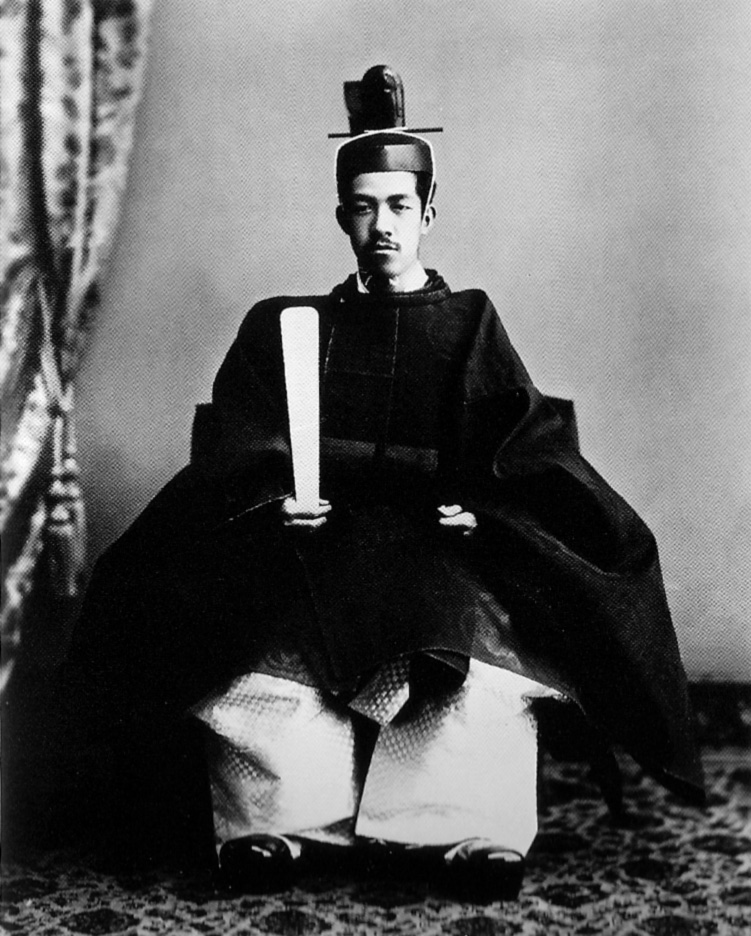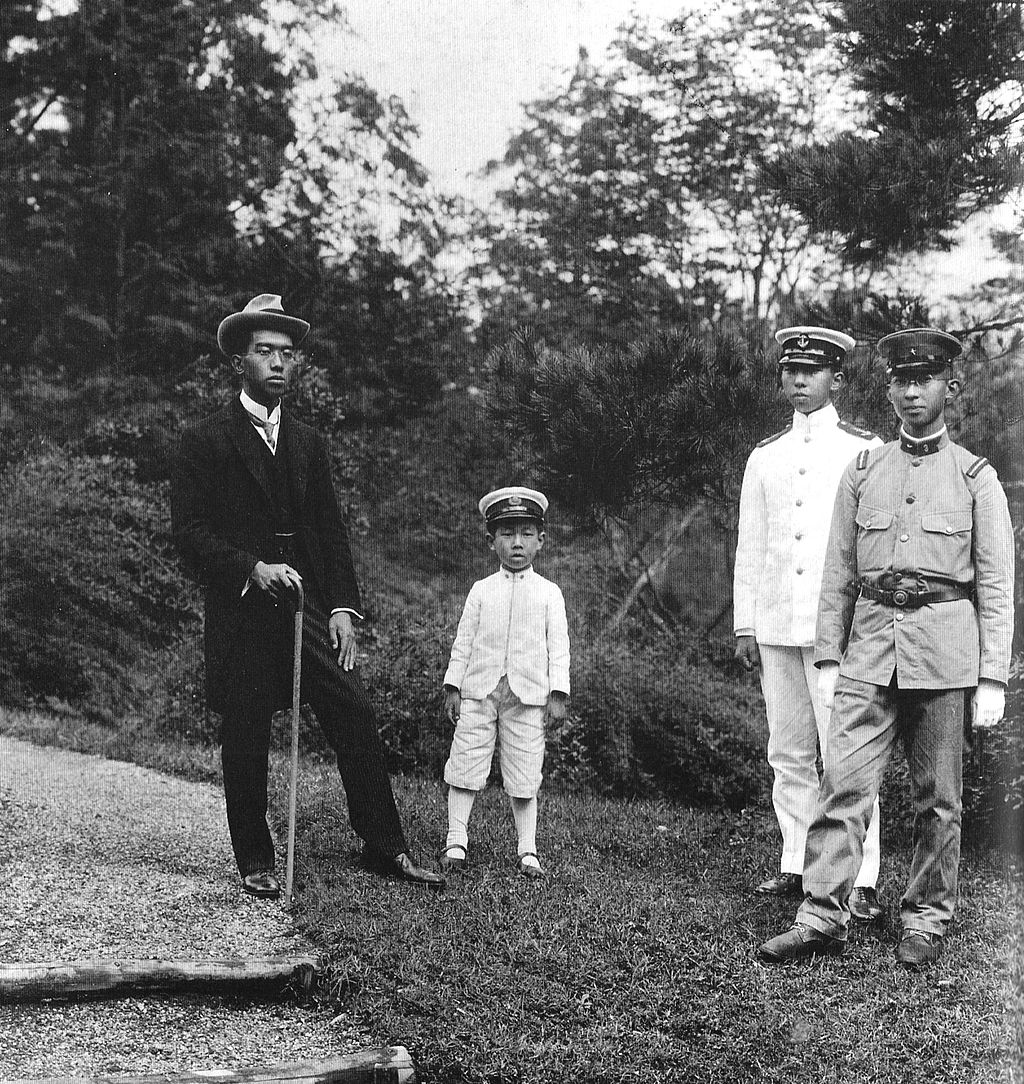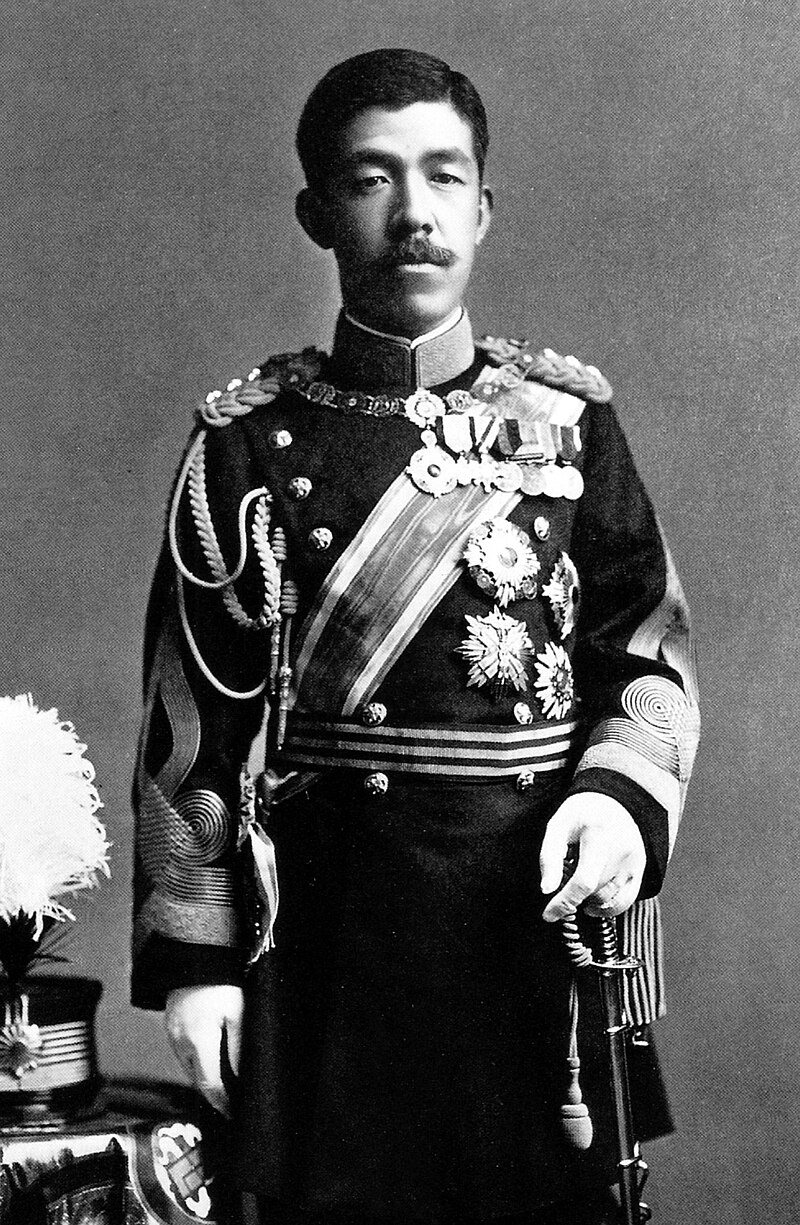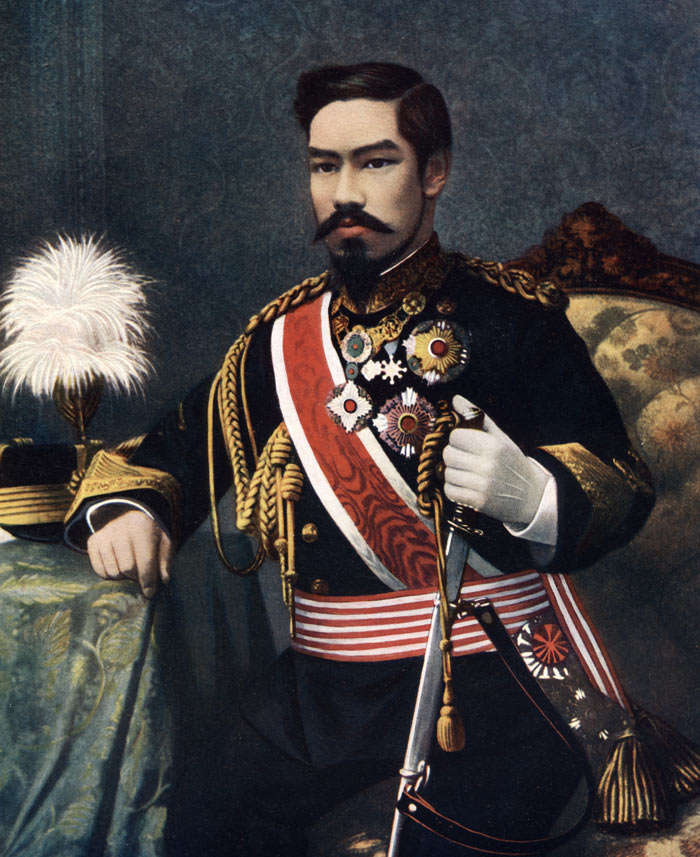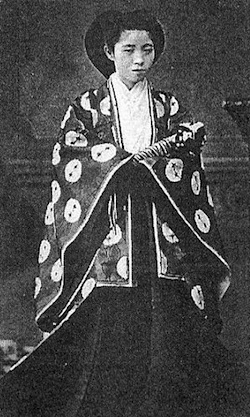by Susan Flantzer
© Unofficial Royalty 2019

Cathédrale Notre-Dame de Paris; Photo Credit – © Susan Flantzer
Tragically, on April 15, 2019, the Cathédrale Notre-Dame de Paris (Our Lady of Paris) caught on fire and sustained significant damage, including the destruction of the spire and much of the roof. French President Emmanuel Macron announced that Notre-Dame will be rebuilt, stating “It’s part of the fate, the destiny of France, and our common project over the coming years. And I am committed to it.”

Cathédrale Notre-Dame de Paris on fire; Credit – By LeLaisserPasserA38 – Own work, CC BY-SA 4.0, https://commons.wikimedia.org/w/index.php?curid=78064310
The Cathédrale Notre-Dame de Paris is part of the UNESCO World Heritage Site, Part of Paris, Banks of the Seine. Construction of the cathedral began in 1163 with the laying of the cornerstone in the presence of King Louis VII of France and Pope Alexander III. The high altar was consecrated in 1189, the 223 foot-high towers were built between 1210 and 1250, and the church was officially completed in 1345.
The Cathédrale Notre-Dame de Paris does not have as many royal connections as Westminster Abbey in London, England. Coronations of Kings of France were traditionally held at Reims Cathedral in Reims, France. The Basilica of Saint-Denis in the Paris suburb of Saint-Denis is the burial place of the Kings of France. The remains of all but three monarchs of France from the 10th century until 1789 are interred at Saint-Denis.

Cathédrale Notre-Dame de Paris; Photo Credit – © Susan Flantzer
However, several significant royal events have occurred at the Cathédrale Notre-Dame de Paris. The information has been compiled from articles at Unofficial Royalty.
December 16, 1431: Nine-year-old King Henry VI of England is crowned King of France

King Henry VI being crowned King of France in Notre Dame Cathedral in Paris; Credit – Wikipedia
King Charles VI of France suffered from some kind of mental illness (he thought he was made of glass) and his son was not a great prospect as king, and so the old dynastic claim to the throne of France, first pursued by King Edward III of England, was renewed. King Henry V of England, the father of King Henry VI of England, demanded the complete restoration of the Angevin Empire, including Normandy, to England, part of the Hundred Year’s War. When the English army reached the walls of Paris, negotiations for peace were started. This resulted in the Treaty of Troyes, an agreement that King Henry V of England and his heirs would inherit the throne of France upon the death of King Charles VI of France. The treaty also arranged for the marriage of Charles VI’s daughter Catherine of Valois to Henry V and the disinheritance of the Dauphin of France (the future King Charles VII of France) from the French succession.
On June 2, 1420, King Henry V married Catherine of Valois in Troyes, France. Two years later, King Henry V succumbed to dysentery, a disease that killed more soldiers than battle, leaving a nine-month-old son to inherit his throne. King Charles VI of France died a couple of months after Henry V, making the young Henry VI King of England and King of France. Henry VI was crowned King of England at Westminster Abbey on November 6, 1429. Two years later, he was crowned King of France at Notre Dame de Paris in a ritual similar to that established by his great-grandfather King Charles V of France. This was an attempt to counter the coronation of Henry VI’s uncle and rival, Charles VII of France, who had been crowned at Reims Cathedral in 1429. Before Henry VI came of age, English rule in France had begun a steady decline with Joan of Arc‘s campaign in support of Dauphin of France, later King Charles VII of France. By 1453, only Calais remained of Henry V’s French conquests.
********************
January 1, 1537: James V, King of Scots is married to Madeleine of Valois

Madeleine of Valois by Corneille de Lyon; Credit – Wikipedia
After the Battle of Flodden in 1514, where James IV, King of Scots led an invading army into England, was defeated and died in the battle, Scotland wanted to strengthen their alliance with France. The Treaty of Rouen was signed in 1517 and one of the provisions was for James V, King of Scots to marry a French princess. James V was the son of James IV and Margaret Tudor, the daughter of King Henry VII of England and the sister of King Henry VIII of England. When James V reached a marriageable age, talks began regarding marriage with Madeleine of Valois, the daughter of King François I of France and his first wife Claude, Duchess of Brittany. However, Madeleine’s ill health was an issue and another French bride, Mary of Bourbon, was offered as a substitute. When James V came to France to meet Mary of Bourbon, he met Madeleine and decided to marry her. Because of his daughter’s health issues, François I was reluctant to agree to the marriage, but eventually, he did so. Madeleine of Valois and James V, King of Scots were married on January 1, 1537, at Notre Dame Cathedral in Paris.
The couple arrived in Scotland on May 19, 1537, after months of celebrations in France, with Madeleine’s health having further deteriorated. Madeleine wrote a letter to her father on June 8, 1537, saying that she was feeling better and that her symptoms had subsided. Despite this, on July 7, 1537, Madeleine died in her husband’s arms, a month short of her seventeenth birthday.
********************
April 24, 1558: Mary, Queen of Scots is married to François, Dauphin of France

François and his wife Mary, Queen of Scots; circa 1558; Credit – Wikipedia
James V, King of Scots had died in 1542 leaving his six-day-old daughter Mary to succeed him as Queen of Scots. In 1548, because of English hostilities, and fearful for Mary’s safety, the Scots appealed to France for help. Henri II, King of France proposed to unite France and Scotland by marrying the young Queen of Scots to his three-year-old son and heir to the French throne François. In July 1548, the Scottish Parliament approved Mary’s marriage to François, Dauphin of France. On August 7, 1548, five-year-old Mary, Queen of Scots set sail for France where she would be raised with her future husband. She would not return to Scotland for thirteen years.
On April 24, 1558, 15-year-old Mary married 14-year-old François, Dauphin of France outside Notre-Dame de Paris. It was a marriage that could have given the future kings of France the throne of Scotland and also a claim to the throne of England through Mary’s great-grandfather, King Henry VII of England. A little more than a year after the wedding, a great tragedy occurred in France, when François’s father King Henri IV was killed in a tournament and his son succeeded him as King François II of France.
After only a 17-month reign, François II, King of France, aged 16, died in great pain on December 5, 1560, possibly from mastoiditis, meningitis, or otitis which turned into an abscess. Left a childless widow, Mary decided to return to Scotland, where she married two more times, lost her throne, and was eventually beheaded after being held captive in England for 18 years.
********************
August 18, 1572: King Henri III of Navarre is married to Marguerite of Valois

Henri of Navarre, later Henri IV of France, and Marguerite of Valois, Credit – Wikipedia
Henri, who was the first French king of the House of Bourbon, was the son of Queen Jeanne III of Navarre and Antoine de Bourbon, Duke de Vendôme. Although he was baptized in the Catholic Church, he was raised as a Protestant. Upon his mother’s death on June 9, 1572, Henri took the throne as King Henri III of Navarre. Just months later, on August 18, 1572, at Notre Dame de Paris, Henri married Marguerite of Valois, the daughter of King Henri II of France and Catherine de’ Medici. As Henri was a Protestant Huguenot, he was not permitted inside the cathedral so the ceremony was held just outside of the building.
Days later, the Saint Bartholomew’s Day Massacre took place, in which thousands of Protestant Huguenots were killed. Henri narrowly escaped death, mostly thanks to his new Catholic wife, and his promise to convert to Catholicism. In 1584, Henri became the heir-presumptive to the French throne, as the last heir to King Henri III of France had died. Henri, Marguerite’s husband, was the most senior agnatic descendant of King Louis IX, and therefore the rightful heir. In 1589, King Henri III of France, brother of Marguerite, was assassinated, and Henri succeeded as King Henri IV of France.
In a loveless and childless marriage, and knowing that he needed an heir, Henri IV had begun negotiations to end his first marriage to Marguerite of Valois. He hoped to marry his mistress but those plans were squelched by his ministers. Instead, he married Marie de’ Medici and the couple had six children. Marguerite, who never remarried, remained a favorite at court and maintained a remarkably close relationship with her former husband and his new wife. Henri IV was assassinated in 1610.
********************
December 2, 1804: Coronation of Napoléon I, Emperor of the French and his first wife Joséphine
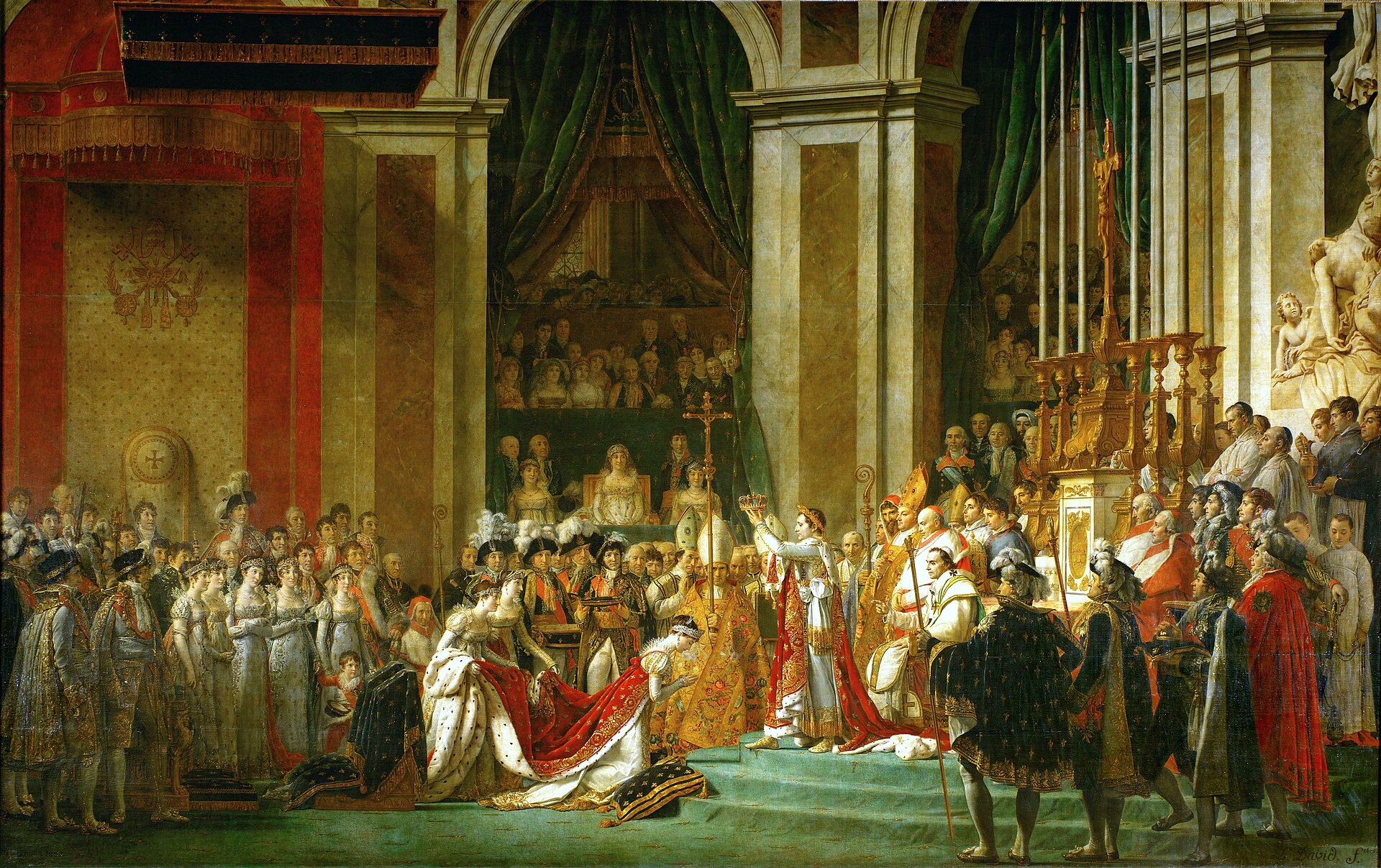
Joséphine kneels before Napoléon to be crowned during their coronation at Notre-Dame de Paris. Pope Pius VII sits behind Napoleon, by Jacques-Louis David and Georges Rouget; Credit – Wikipedia
Napoléon I, Emperor of the French was born Napoleone di Buonaparte on the island of Corsica, then part of France and now part of Italy. When he was in his twenties, he adopted the more French-sounding Napoléon Bonaparte. Napoléon joined the French army and quickly advanced. During the latter part of the French Revolution, he rose to prominence and by the age of 30 was the First Consul of France. Napoléon was Emperor of the French from 1804 to 1815.
Napoléon married Joséphine de Beauharnais (born Marie Josèphe Rose Tascher de La Pagerie on the island of Martinique in the Caribbean) in 1796. Through her first marriage to Alexandre de Beauharnais (who was guillotined during the French Revolution), Joséphine is the ancestor of the royal families of Sweden, Denmark, Belgium, Norway, and Luxembourg.
Napoléon and Joséphine were crowned Emperor and Empress of the French in an extremely elaborate ceremony presided over by Pope Pius VII. Napoléon was anointed by Pope Pius VII who was then about to crown him. However, Napoléon went to the altar, took the crown and placed it upon his own head. He then replaced the crown with a laurel wreath of gold made in the ancient Roman style and crowned his wife, who knelt before him.
Joséphine and Napoléon’s marriage was childless and in 1809, Napoléon decided to divorce his wife so he could marry again and his new wife produce an heir. Desperately upset upon first hearing the news about the divorce, Joséphine ultimately agreed. After their divorce, Napoléon insisted that Joséphine retain the title of Empress. Joséphine received a pension of 5 million francs per year and several residences.
Napoléon married Archduchess Marie Louise of Austria, the eldest child of Emperor Franz I of Austria and his second wife, Maria Theresa of Naples and Sicily. Marie Louise gave birth to a son Napoléon François Charles Joseph Bonaparte in 1811. Young Napoléon died of tuberculosis at the age of 21. Regarding Marie Louise, Napoléon said that he had married a womb.
Napoléon’s various invasions throughout Europe resulted in the collapse of his empire and his defeat by a coalition of European nations. He was exiled to the island of Elba off the coast of Tuscany but escaped and took control of France once again. He was soon defeated at the Battle of Waterloo and exiled to the remote island of Saint Helena in the South Atlantic, where he died six years later. Napoléon’s last words were, “France, army, head of the army, Joséphine.”
********************
January 30, 1853 – Napoléon III, Emperor of the French is married to Eugénie de Montijo

Credit – Wikipedia
Napoléon III, Emperor of the French, was the last monarch of France, reigning from 1852 until 1870. He was born Charles-Louis Napoléon Bonaparte (but typically known as Louis-Napoléon). His parents were Louis Bonaparte, King of Holland (younger brother of Napoléon I, Emperor of the French) and Hortense de Beauharnais, the daughter of Emperor Napoléon’s first wife, Joséphine de Beauharnais).
The French Revolution of 1848 led to the abdication of King Louis-Philippe, and the declaration of the Second Republic. In September 1848, Louis-Napoléon was elected to the French National Assembly. He immediately threw his hat into the ring to become President of the French Republic and on December 20, 1848, was declared the winner of the election. Taking the title Prince-President, Louis-Napoléon took up residence at the Élysée Palace.
Not content being simply a Prince-President, he arranged for the Senate to schedule a referendum to decide if he should be declared Emperor. On December 2, 1852, following an overwhelming vote in his favor, the Second Republic ended and the Second French Empire was declared. Louis-Napoléon took the throne as Napoléon III, Emperor of the French. He quickly made the Tuileries Palace his official residence.
After being turned down by several European princesses, Napoléon III found his future bride, Spanish-born Doña María Eugenia Ignacia Agustina de Palafox y Kirkpatrick on May 5, 1826, in Granada, Spain. Known as Eugénie de Montijo, she was the daughter of Spanish nobleman Cipriano de Palafox y Portocarrero and María Manuela Enriqueta Kirkpatrick de Closbourn y de Grevigné.
Napoléon III and Eugénie were married in a civil ceremony on January 29, 1853, at the Tuileries Palace in Paris The following day, a much grander religious ceremony was held at Notre Dame de Paris. The couple had one son Napoléon, Prince Imperial who died fighting in the Zulu War in South Africa in 1879.
In July 1870, France entered the Franco-Prussian War. Without significant allied support, and with unprepared and limited forces, the French army was quickly defeated. Emperor Napoléon III was captured at the Battle of Sedan and quickly surrendered. As word reached Paris, the Third Republic was declared on September 4, 1870, ending – for the last time – the French monarchy.
********************
This article is the intellectual property of Unofficial Royalty and is NOT TO BE COPIED, EDITED, OR POSTED IN ANY FORM ON ANOTHER WEBSITE under any circumstances. It is permissible to use a link that directs to Unofficial Royalty.

